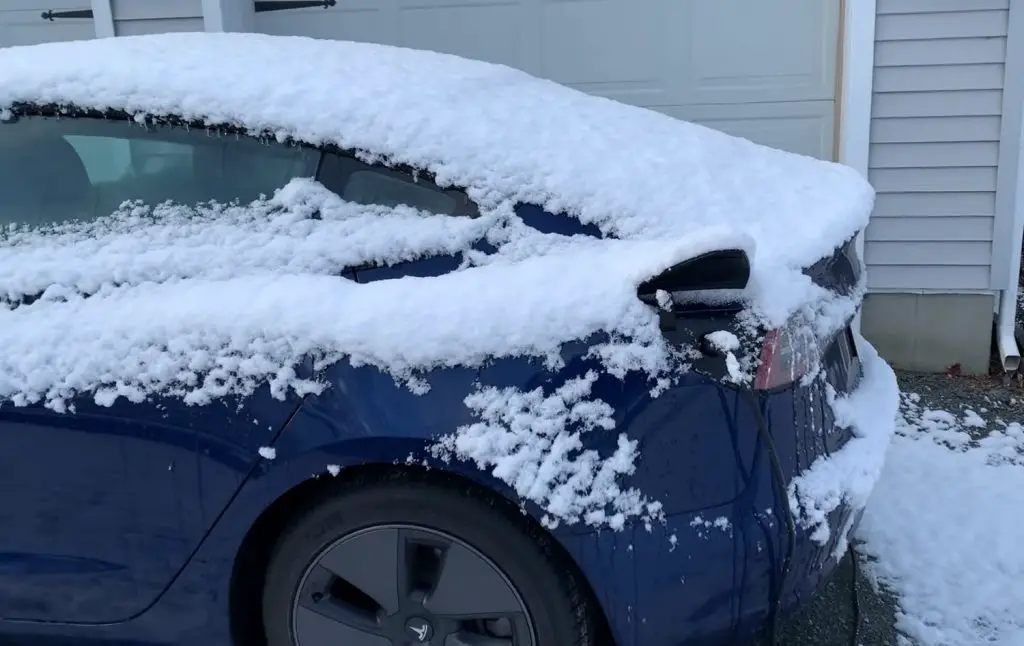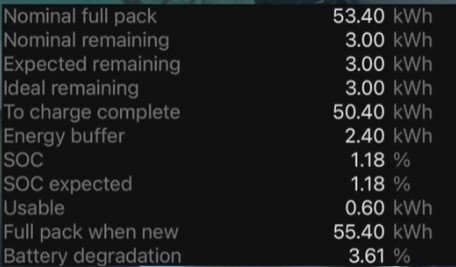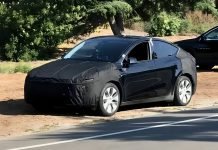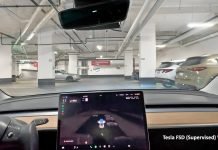Very few news articles nowadays talk about the base variants of cars. Most of them are always talking about the topmost variant, or comparing it with the second-best to check whether it is worth it, and so on. So, let’s check what happens when you drive the base variant of Tesla Model 3 from almost 100% state of charge (SoC) to almost 0% in cold weather?

Driving A 2021 Tesla Model 3 Standard Range Plus To (Almost) 0% SOC!!
A Real World Range Test for Tesla Model 3 Standard Range Plus
YouTuber ‘Battery Bro’ decided to have a range test for his Model 3 Standard Range Plus in cold weather in New York state. He started in upstate New York, drove down towards New York City and turned around in Newburgh to come back up the same route. The idea was to drive the car at a constant speed of 70 mph (113 kph) as much as possible.
The EPA-rated figure for the single-charge range is 267 miles (430 km) for the Model 3 SR+. However, most real-world tests have found this figure to be around 181 miles (291 km).
In the beginning, the ambient temperature was around 28°F, which is around -2°C, while the temperature inside the car was 29°F. He drove down to the municipal building in his town first to access the free Level 2 charging. The initial SoC was around 87%, which is a sufficient amount for a normal drive. But since he wanted to conduct a proper range test, he charged it all the way up to 98%. When he plugged his car in, the charging began at around 6 kW.
The issue with charging in cold weather is getting the battery to its optimum range of temperature. To do this, the motor uses 3 kW out of the 6 kW available and resists the current entering through the charger. This heat is then sent to the battery through the coolant, and the battery gets warmed up. Once the battery is at the optimum temperature, this process stops, and the car can use the entire 6 kW purely for charging. Because of this, the Model 3 in question took almost 90 minutes to charge from 87% to 98%.
The Actual Drive
According to the range estimation algorithm of the Model 3, the trip from upstate New York to Newburgh and back would decrease the SoC level to around -2%, which means that the trip will be a very thrilling one. The charging from 87% to 98% increased the cell temperature to around 37°C as well.
The first 27 miles (43 km) decreased the battery level to 85%, but that included some city driving too. He took a small break after 52 miles (84 km), before setting off again. Most of the journey was done at 70 mph (113 kph), just as he had planned to.
After taking a U-turn in Newburgh, the range estimate showed that he would arrive at the starting point at 5% battery level. He also commented on the smoothness of the Autopilot system, and how it made his life easier. One interesting thing to be noted was that he did not require any cabin heating at all. He only has the seat heater on. This would definitely affect the final range.
At 147.3 miles (237 km) into the journey, he was just 30 miles (48 km) out from his starting point. That makes it a total of a 177-mile (285 km) journey. Considering the real-world range of 181 miles, this was cutting it quite close. But since he wanted to get the SoC as close to 0% as possible, he decided to drive the car around a bit more, and see how many actual miles it goes.
The Ending
At around 3-4% of battery left, the odometer crossed 200 miles (320 km) for the trip, and that is quite impressive. Of course, he made the trip without any cabin heating and kept the speed at 70 mph as much as possible. But still, getting 20 miles (32 km) above the estimated real-world range is very good.
Just as he pulled into the Supercharger, the screen displayed the low battery warning. The SoC was at 1%, and the trip started at 98%. So, technically, he drove around consuming 97% of the total battery capacity. He ended up getting 205.5 miles (331 km). Adding up the remaining 3% and a bit of buffer below 0% which Tesla provides brings the total to 219 miles (352 km). That is around 83-85% of the EPA-rated range, which is quite good.
He also provided some battery stats of his entire trip which are mentioned in the figure below. The 50.4 kWh of usable battery capacity is higher than what many people state on the internet.

Our Opinion
Any real-world range test has its own restrictions. In this case, the car was driven at a constant speed of 70 mph (113 kph). While this can happen if you put the car on Autopilot, it may not happen on every trip. In addition to that, the use of the cabin heater is subject to the passengers’ comfort.
Still, getting around 83% of the EPA-rated figure in the real world is a good feat. You can watch the full video here.



















Electrics unlike gas powered vehicles get better range in the city than out on the highway. This is due to the fact that they have no transmission. Gas powered vehicles need to be in high gear to get the best mileage